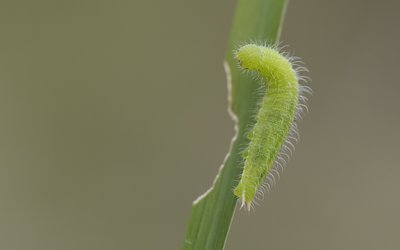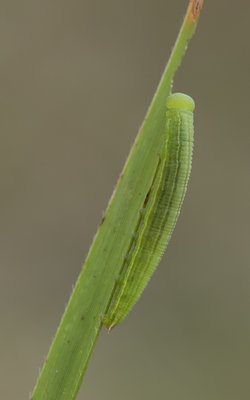Page 3 of 3
Re: March 2018
Posted: Tue Mar 27, 2018 8:47 pm
by essexbuzzard
Still a great picture, though. A sight that not many of us have seen. Great picture.
Yes David, you’ve won that one. Bet your heart bleeds!

Re: March 2018
Posted: Thu Mar 29, 2018 8:08 am
by Andrew555
What a fantastic sight Paul! Well done.

Great shot, especially with them on those leaves.

Cheers
Re: March 2018
Posted: Sat Mar 31, 2018 5:17 pm
by badgerbob
Well, I can't beat that!!!!
However,
As soon as I arrived at High and Over today I disturbed a butterfly that flew off quickly down the hill. Fortunately I watched it in the binoculars and saw the area it landed in. On approaching it the butterfly took off and flew back up the hill!! Once again I hadn't managed an id so I followed it back up the hill. This time I spotted it before it flew again, and I was very surprised to see it was a Speckled Wood. High and Over is not known for early sightings of this species, in fact it is normally 2 weeks or so behind inland sites. I'm pretty sure it is also my first ever March sighting of this species.
I also saw 2 Small Tortoiseshell, but the main reason for the visit was another larva search. For the 2nd time this year I hit 40 Wall brown larva. It seems the eggs and larva from the large 3rd brood have survived very well this winter. I also found what I thought was a *Speckled Wood* larva and 2 tiny Meadow Brown larva. In all a very successful afternoon despite the cool Easter weather.

- Small Heath larva feeding.

- Meadow Brown larva.
Pete Eeles has kindly contacted me to inform me that the young Speckled Wood larva is actually a Small Heath larva. His explanation below. Due to this I am posting another image of the larva. Jeremy Thomas in his excellent book mentions that in the past he has occasionally come across a final instar Small Heath larva feeding on dull days. This larva is normally a nocturnal feeder.

- Small Heath larva feeding.
http://bobsbutterflies.blogspot.co.uk
Re: March 2018
Posted: Sat Mar 31, 2018 6:21 pm
by Pete Eeles
badgerbob wrote:I also found a Speckled Wood larva ...
Great work, Bob! An extraordinary count of Wall larvae!
I hope you'll be pleased, but your Speckled Wood larva is, I believe, a late-instar Small Heath (and thanks to Vince for pointing your post out to me). Both Wall and Speckled Wood larva have some hairs on their surface whereas the Small Heath is the exception to the rule and, like its larger cousin, is totally devoid of hairs. Here's a 4th and 5th instar larva as examples. I can't tell you which instar yours is until I do a detailed analysis of this species.
![Small Heath - larva (4th instar) - Thatcham - 13-Mar-17 [REARED]-10.jpg (636.54 KiB) Viewed 1761 times Small Heath 4th instar](./files/thumb_3_7360d2de3146b74b6d074ef53aa0c7df)
- Small Heath 4th instar
![Small Heath - L5 - Thatcham - 17-Apr-17 [REARED].jpg (766.92 KiB) Viewed 1761 times Small Heath 5th (final) instar](./files/thumb_3_7de9855f79947a64859acf14e578e443)
- Small Heath 5th (final) instar
Cheers,
- Pete
Re: March 2018
Posted: Sat Mar 31, 2018 6:52 pm
by badgerbob
Oh blimey.
Yes, thanks for that Pete. I just had a quick check at another larva I found a couple of weeks back that I thought was a Specklie. That one is as it has some hairs.
Many thanks for pointing that out, and yes, I am pleased as this is the 1st Small Heath larva I've come across. We learn something new every day. Apart from the hair the pattern of the Small Heath and Speckled Wood is very similar so perhaps I have come across one or two in the past without realising!!
Re: March 2018
Posted: Sun Apr 01, 2018 8:21 am
by peterc
badgerbob wrote:Well, I can't beat that!!!!
However,
As soon as I arrived at High and Over today I disturbed a butterfly that flew off quickly down the hill. Fortunately I watched it in the binoculars and saw the area it landed in. On approaching it the butterfly took off and flew back up the hill!! Once again I hadn't managed an id so I followed it back up the hill. This time I spotted it before it flew again, and I was very surprised to see it was a Speckled Wood. High and Over is not known for early sightings of this species, in fact it is normally 2 weeks or so behind inland sites. I'm pretty sure it is also my first ever March sighting of this species.
I also saw 2 Small Tortoiseshell, but the main reason for the visit was another larva search. For the 2nd time this year I hit 40 Wall brown larva. It seems the eggs and larva from the large 3rd brood have survived very well this winter. I also found what I thought was a *Speckled Wood* larva and 2 tiny Meadow Brown larva. In all a very successful afternoon despite the cool Easter weather.
BOB_1580 (1280x800).jpg
BOB_1591 (2) (1280x801).jpg
Pete Eeles has kindly contacted me to inform me that the young Speckled Wood larva is actually a Small Heath larva. His explanation below. Due to this I am posting another image of the larva. Jeremy Thomas in his excellent book mentions that in the past he has occasionally come across a final instar Small Heath larva feeding on dull days. This larva is normally a nocturnal feeder.
BOB_1569 (800x1280).jpg
http://bobsbutterflies.blogspot.co.uk
Fantastic finds on the larvae, Bob.
Did the 3rd brood Wall emerge earlier than usual last year so perhaps the offspring larvae, presumably being more developed, were able to withstand the winter better?
ATB
Peter
Re: March 2018
Posted: Sun Apr 01, 2018 10:45 am
by badgerbob
Hi Peter.
The 1st 3rd brood was seen at the very end of August on the 31st, with a few flying with the last 2nd brood stragglers. The 3rd brood Wall I see more often than the other broods egg laying with several seen doing this on the 17th September for example, I would guess because they know that they have to get on with it before the weather could change.
In the area that I am finding the larva on any day in the peak flying time of the 3rd brood there would be around 20 butterflies flying with 25% being females.
This whole area is generally good for 3rd brood Wall, and in all the years I've been monitoring the Wall there I can only recall one year without any 3rd brood and another year with just a single sighting.
My highest larva count before this year was also during a Spring following an enormous 3rd brood so possibly with the site being a South/East coastal facing site perhaps the 3rd brood larva do have a better chance of survival if there is any truth in this theory of the 3rd brood killing the species off.
Strangely, even the Wall larva that I find in December is larger than the Meadow Brown larva that I found just yesterday, although of course, the Meadow Brown larva would be tucked up asleep throughout the Winter, whereas the Wall larva take any opportunity to feed during milder days.
I do wonder if a sudden really cold spell in the late Autumn also has a detrimental effect as the larva preparing to emerge as 3rd brood gets killed off before they emerge meaning less overwintering larva.
Certainly it is clear very early in the year if we are going to get a good 3rd brood, just by the date that the 1st brood start to fly, although the size of that 3rd brood would vary depending on the weather later in the season.
Re: March 2018
Posted: Mon Apr 02, 2018 8:51 am
by peterc
badgerbob wrote:Hi Peter.
The 1st 3rd brood was seen at the very end of August on the 31st, with a few flying with the last 2nd brood stragglers. The 3rd brood Wall I see more often than the other broods egg laying with several seen doing this on the 17th September for example, I would guess because they know that they have to get on with it before the weather could change.
In the area that I am finding the larva on any day in the peak flying time of the 3rd brood there would be around 20 butterflies flying with 25% being females.
This whole area is generally good for 3rd brood Wall, and in all the years I've been monitoring the Wall there I can only recall one year without any 3rd brood and another year with just a single sighting.
My highest larva count before this year was also during a Spring following an enormous 3rd brood so possibly with the site being a South/East coastal facing site perhaps the 3rd brood larva do have a better chance of survival if there is any truth in this theory of the 3rd brood killing the species off.
Strangely, even the Wall larva that I find in December is larger than the Meadow Brown larva that I found just yesterday, although of course, the Meadow Brown larva would be tucked up asleep throughout the Winter, whereas the Wall larva take any opportunity to feed during milder days.
I do wonder if a sudden really cold spell in the late Autumn also has a detrimental effect as the larva preparing to emerge as 3rd brood gets killed off before they emerge meaning less overwintering larva.
Certainly it is clear very early in the year if we are going to get a good 3rd brood, just by the date that the 1st brood start to fly, although the size of that 3rd brood would vary depending on the weather later in the season.
Thanks, Bob.
All being well, it looks like there will be a bumper emergence of 1st brood Walls at your site

ATB
Peter
Re: March 2018
Posted: Mon Apr 02, 2018 9:33 pm
by David M
Some superb larval images there, guys. Perhaps it's time we all became converts to early stages to sustain us through austere times such as we are experiencing right now.
Re: March 2018
Posted: Fri Apr 06, 2018 8:50 pm
by Ian Pratt
Just back from northern Spain visiting family. First whites of the year seen in Zaragoza, definite large white and possible small white, on 30 March.
Re: March 2018
Posted: Fri Apr 06, 2018 9:23 pm
by Rivoldini
All barren in north Durham and things seem two weeks later. Three sites visited and just one Comma noted. My first sighting for the year.
Re: March 2018
Posted: Fri Apr 06, 2018 9:52 pm
by Charles Nicol
first pic of the year today

for some reason i posted this in the March section

